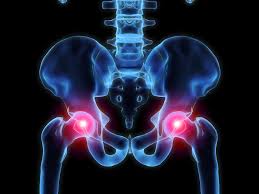Femoroacetabular Impingement (FAI) syndrome is a term used to describe a certain type of pain arising from the hip joint. Basically it is a situation where the bones of the hip abut each other resulting in pain in the bones themselves or pinching other material within the hip between these bones. It is related to the bony morphology (shape) of the hip joint and describes a range of things that can contribute to an imperfect fit of the ball (femoral head) within the socket (acetabulum).
Recent new guidelines (The Warwick Agreement on FAI) have identified 3 criteria that need to be present to be diagnosed with FAI syndrome. These include:
- Patient reported symptoms,
- Symptoms reproduced on clinical testing, and
- Changes on radiological imaging.
Without all three of these you cannot be diagnosed with FAI syndrome.
In a large proportion of people there may be bony changes on imaging without any symptoms. This is not FAI. It is important to remember that without symptoms these findings on imaging represent an individual’s normal bony morphology and does not necessarily need to be treated.
Symptoms?
The most common complaint of those with FAI syndrome is groin pain on the affected side, however this pain pattern can vary. Approximately 85% of those with FAI will have groin pain, 50% will have lateral (side) hip pain and around 5-10% will have posterior hip pain (bottom pain).
Usually these symptoms are reproduced with certain positions or movements – most commonly bending the hip up (flexion) and twisting movements. These may occur in everyday life in situations such as getting into a car or can occur during sporting or athletic activities.
Who is at risk?
Trying to determine who is at risk is a complex process. A large number of people will have deformities on imaging that do not correlate with pain thus imaging findings need to be taken with a grain of salt.
In saying that, those who have a history of hip problems, missing developmental milestones in childhood or a history of hip dysplasia (abnormal development) may be at an increased risk of FAI syndrome.
Treatment?
The evidence now suggests that an actual diagnosed FAI syndrome does not normally resolve on its own. If you have FAI syndrome there are broadly 3 treatment options:
- Conservative management – involves education on the condition especially around understanding positions which the hip is like to pinch in, activity modification to try to avoid these positions (usually only temporarily) and potentially pain relief using anti-inflammatories or cortisones injections.
- Physiotherapy rehabilitation – this will comprise of activity modification and education as above. In addition, a program of exercises looking at improving strength, range of motion and neuromuscular control of the hip would be implemented.
- Surgery – usually this is reserved for patients who have failed to respond to the above treatments. In broad terms, it aims to improve the structural “fit” of the ball in the socket.
If you think that you may have FAI, you should consult with one of our physiotherapists who have been trained to assess and treat this condition.
In addition, our Principal Physiotherapist, Brendan Limbrey, is a treating physiotherapist on a large international hip study (FASHIoN) for those with FAI which is looking at the outcomes gained from surgery compared with physiotherapy and conservative management.








